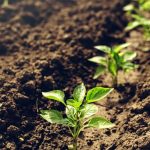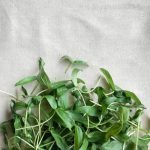Are you looking to grow a thriving vegetable garden? Then it’s crucial to start with the best gardening soil for vegetables. The success of your vegetable garden is heavily reliant on the quality of the soil you use. In this article, we will explore the importance of using the best soil for vegetable gardening, understanding different types of gardening soil, factors to consider when choosing the best soil, and much more.
Having a thorough understanding of different types of gardening soil available is essential in order to make an informed decision. Factors such as texture, drainage, acidity, and fertility play a significant role in determining which type of soil is most suitable for growing vegetables.
When it comes to choosing the best gardening soil for vegetables, there are several key factors that should be taken into consideration. Factors such as nutrient content, water retention, pH level, and texture are all important considerations when selecting the ideal soil for your vegetable garden. In the following sections, we will delve deeper into these factors and provide recommendations for top 5 gardening soils that have proven to yield successful results for growing vegetables.
Understanding the Different Types of Gardening Soil Available
When it comes to vegetable gardening, the type of soil you use plays a crucial role in the success of your crops. Understanding the different types of gardening soil available is essential in choosing the best one for your vegetables. There are three main types of soil: sandy soil, clay soil, and loamy soil. Each type has its own characteristics that can affect the growth and health of your vegetables.
Sandy Soil
Sandy soil is well-draining and warms up quickly in the spring, making it ideal for early planting. However, its loose structure can cause nutrients to leach away easily, requiring more frequent fertilization.
Clay Soil
Clay soil holds moisture well and is rich in nutrients, but it can become waterlogged and compacted, leading to poor root development. Amending clay soil with organic matter can improve its structure for better vegetable growth.
Loamy Soil
Loamy soil is often considered the best gardening soil for vegetables because it combines the benefits of both sandy and clay soils. It has good drainage, retains moisture well, and is rich in nutrients, providing an optimal environment for vegetable growth.
Understanding the characteristics of each type of soil will help you make an informed decision on which type will be best for growing your vegetables. Additionally, conducting a simple soil test can provide insights into the pH level and nutrient content of your garden soil, which will further guide your choice in selecting the best gardening soil for vegetables.
Factors to Consider When Choosing the Best Soil for Vegetables
When it comes to choosing the best gardening soil for vegetables, there are several factors to consider in order to promote healthy growth and a bountiful harvest. One of the most important factors to consider is the texture of the soil.
Ideally, vegetable garden soil should have a loamy texture, which means it should be a balanced mixture of sand, silt, and clay. This type of soil provides good drainage while still retaining enough moisture and nutrients for plant roots to thrive.
Another crucial factor to consider is the pH level of the soil. Most vegetables grow best in slightly acidic soil with a pH level between 6.0 and 7.0. Testing your soil’s pH level can help you determine if any adjustments need to be made to create an optimal growing environment for your vegetables.
In addition to texture and pH level, it’s also important to consider the nutrient content of the soil. Vegetables require a variety of essential nutrients in order to grow and develop properly. Therefore, choosing a gardening soil that is rich in organic matter and supplemented with essential nutrients like nitrogen, phosphorus, and potassium is key to supporting healthy vegetable growth.
| Factor | Consideration |
|---|---|
| Texture | Loamy texture for ideal drainage |
| pH Level | Slightly acidic pH between 6.0-7.0 |
| Nutrient Content | Rich in organic matter and essential nutrients like nitrogen, phosphorus, and potassium |
Top 5 Recommended Gardening Soil for Growing Vegetables
When it comes to growing vegetables, using the best gardening soil is essential for the success of your garden. With so many options available, it can be overwhelming to choose the right soil for your vegetable plants. However, understanding the different types of gardening soil and considering certain factors can help you make an informed decision.
Types of Gardening Soil
There are various types of gardening soil available, each with its own unique properties and benefits. Some common types include potting mix, compost-enriched soil, topsoil, raised bed mix, and sandy loam soil. Each type has specific characteristics that make them suitable for different types of vegetables and growing conditions.
Factors to Consider
When choosing the best gardening soil for vegetables, it’s important to consider factors such as drainage, nutrient content, pH levels, and texture. Different vegetables have different requirements when it comes to these factors, so it’s important to select a soil that aligns with the needs of the specific vegetables you plan to grow.
Top 5 Recommended Gardening Soil
- Miracle-Gro Performance Organics All Purpose In-Ground Soil
- FoxFarm Ocean Forest Potting Soil
- Jobe’s Organics Vegetable & Tomato Fertilizer Spikes
- Sun Gro Black Gold Natural & Organic Potting Mix
- Espoma Garden-tone Organic Vegetable & Herb Food
These top 5 recommended gardening soils are known for their high-quality ingredients and ability to provide the necessary nutrients and structure for healthy vegetable growth. When preparing your vegetable garden for planting, consider using one of these recommended soils for optimal results.
Overall, choosing the best gardening soil for vegetables is crucial for ensuring a successful harvest. By understanding the different types of gardening soil available, considering important factors when making a selection, and utilizing one of the top 5 recommended options, you can set your vegetable garden up for success from the start.
Tips for Preparing and Conditioning the Soil for Planting Vegetables
When it comes to planting vegetables, preparing and conditioning the soil is crucial for a successful harvest. The best gardening soil for vegetables is one that is rich in nutrients, well-draining, and has a good texture for root development. Before you start planting your vegetable garden, it is important to take the time to prepare and condition the soil properly.
One of the first steps in preparing the soil for planting vegetables is to test its pH level. Different types of vegetables thrive in different pH levels, so it’s important to adjust the soil accordingly.
You can use a simple at-home testing kit or send a soil sample to a lab for more precise results. Once you know the pH level of your soil, you can add amendments such as lime to raise the pH or sulfur to lower it.
In addition to adjusting the pH level, it’s essential to improve the overall texture and fertility of the soil. Adding organic matter such as compost, well-rotted manure, or leaf mold can help improve nutrient levels and water retention while also enhancing microbial activity in the soil.
Mixing these organic materials into the top 6-8 inches of soil will help create an ideal environment for vegetable root development. By taking these steps to prepare and condition your soil before planting, you can create a healthy foundation for your vegetable garden and set yourself up for a bountiful harvest.
Best Practices for Maintaining Healthy Soil Throughout the Growing Season
Maintaining healthy soil throughout the growing season is crucial for the success of your vegetable garden. Healthy soil provides essential nutrients, supports beneficial microorganisms, and encourages strong root development in your vegetables. Here are some best practices to ensure that your gardening soil remains in optimal condition all season long:
- Regularly test the pH levels of your soil to ensure it is within the ideal range for vegetable growth. Most vegetables prefer a slightly acidic soil with a pH level between 6.0 and 6.8.
- Implement crop rotation to prevent depletion of specific nutrients in the soil. Rotating vegetable crops from year to year helps maintain a balanced nutrient profile and minimizes the risk of disease buildup in the soil.
- Utilize organic mulch to help retain moisture, regulate temperature, suppress weed growth, and improve the overall structure of the soil. Organic materials such as straw, leaves, or grass clippings also contribute beneficial organic matter as they decompose.
In addition to these best practices, it is important to regularly monitor the moisture levels of your gardening soil. Overwatering can lead to waterlogged conditions and nutrient leaching, while underwatering can result in dry and compacted soil that hinders plant growth. By maintaining proper moisture levels and incorporating organic matter into the soil, you can ensure that your vegetables have access to the best gardening soil for vegetables throughout their growing season.
It’s equally important to minimize soil disturbance as much as possible during the growing season – excessive tilling destroys beneficial microbial communities and disrupts the delicate balance of nutrients in the soil. Instead, consider using no-till gardening methods or limit tilling only when absolutely necessary for planting or bed preparation.
Understanding the Signs of Unhealthy Soil and How to Remedy It
When it comes to vegetable gardening, using the best gardening soil for vegetables is crucial for successful and bountiful harvests. However, even with the best soil, there can be signs of unhealthy soil that need to be addressed in order to maintain a thriving garden. Understanding these signs and knowing how to remedy them is essential for any gardener.
Here are some common signs of unhealthy soil and methods for remedying them:
1. Poor Drainage: One of the most common signs of unhealthy soil is poor drainage. This can lead to waterlogged roots and ultimately, the death of your plants. To remedy this, consider incorporating organic matter such as compost or peat moss into the soil to improve its structure and drainage.
2. Nutrient Deficiency: If your plants are showing signs of stunted growth, yellowing leaves, or poor fruit production, it could be a sign of nutrient deficiency in the soil. Conduct a soil test to determine which nutrients are lacking and then amend the soil with organic fertilizers or compost rich in those specific nutrients.
3. Compacted Soil: Compacted soil can hinder root growth and prevent proper air and water circulation. Using a garden fork or tiller to aerate the soil can help alleviate compaction and improve overall soil health.
By being vigilant for these signs of unhealthy soil and taking proactive measures to remedy them, you can ensure that your vegetable garden thrives throughout the growing season.
Real-Life Success Stories of Using the Best Gardening Soil for Vegetables
When it comes to using the best gardening soil for vegetables, real-life success stories can be a great source of inspiration and guidance. Many gardeners have experienced firsthand the positive effects of using high-quality soil for their vegetable gardens, leading to bountiful harvests and healthy, thriving plants. These success stories can provide valuable insights into the benefits of choosing the right soil for vegetable gardening.
One common success story involves the use of organic gardening soil for vegetables. Many gardeners have reported significant improvements in plant growth and yield after switching to organic soil. This type of soil is rich in essential nutrients and beneficial microorganisms, which contribute to healthier plants and better-tasting produce. Additionally, organic gardening soil is free from harmful chemicals and pesticides, making it a safe and sustainable choice for vegetable gardening.
Another success story relates to the use of specially formulated raised bed soil for growing vegetables. Raised beds offer excellent drainage and aeration, which are crucial for healthy root development in vegetable plants. Gardeners who have invested in high-quality raised bed soil have witnessed impressive results, with improved moisture retention and reduced risk of diseases compared to traditional ground planting.
Moreover, success stories involving homemade compost as gardening soil for vegetables are also prevalent among experienced gardeners. Compost is a fantastic way to enrich the soil with organic matter, providing essential nutrients and improving overall soil structure. Many gardeners have shared how their homemade compost has resulted in vibrant and abundant vegetable gardens, showcasing the effectiveness of using nutrient-rich organic material in gardening.
| Success Story | High-Quality Soil Used |
|---|---|
| Organic Soil | Organic gardening soil |
| Raised Bed Success | Raised bed soil |
| Compost Power | Homemade compost |
Conclusion and Final Thoughts on the Importance of Using the Best Soil for Vegetable Gardening
In conclusion, choosing the best gardening soil for vegetables is crucial for a successful and bountiful harvest. The right soil provides the essential nutrients, drainage, and structure necessary for healthy plant growth. By understanding the different types of gardening soil available and considering important factors such as pH levels and texture, gardeners can make an informed decision when selecting the best soil for their vegetable garden.
When it comes to the top 5 recommended gardening soil for growing vegetables, options such as loamy soil, compost-enriched soil, and well-draining sandy soil are among the popular choices. These soils provide the ideal environment for vegetables to thrive and produce high-quality yields. Moreover, preparing and conditioning the soil is equally important. Adding organic matter, regular watering, and proper mulching are essential practices that help maintain healthy soil throughout the growing season.
It is crucial to recognize the signs of unhealthy soil to address any issues promptly. Compacted or waterlogged soil, nutrient deficiencies, or pest infestations are indicators that adjustments need to be made.
Real-life success stories from experienced gardeners serve as a testament to how using the best gardening soil for vegetables has resulted in impressive yields and vibrant, thriving plants. Overall, by prioritizing quality gardening soil and following best practices for maintaining healthy soil, gardeners can create an optimal growing environment for their beloved vegetable crops.
Frequently Asked Questions
What Is the Best Soil to Buy for Vegetable Garden?
The best soil to buy for a vegetable garden is a well-balanced, nutrient-rich potting mix or garden soil with added organic matter. Look for options specifically designed for vegetable gardening to ensure the right composition.
What Soil to Use for Growing Vegetables in Containers?
When growing vegetables in containers, it’s important to use a high-quality potting mix that is lightweight, well-draining, and rich in nutrients. Avoid using regular garden soil as it may compact too much in containers.
Should I Use Topsoil or Compost for Vegetable Garden?
Both topsoil and compost can be beneficial for a vegetable garden, but they serve different purposes. Topsoil provides a good base for the garden and helps with drainage, while compost adds valuable nutrients to the soil. It’s often best to use a combination of both for optimal results.

If you’re looking to get into vegetable gardening, or are just looking for some tips on how to make your current garden better, then you’ve come to the right place! My name is Ethel and I have been gardening for years. In this blog, I’m going to share with you some of my best tips on how to create a successful vegetable garden.





